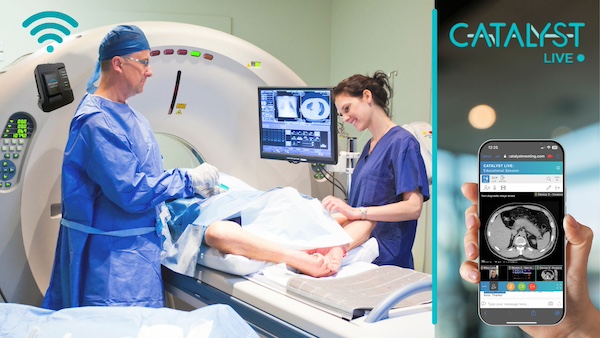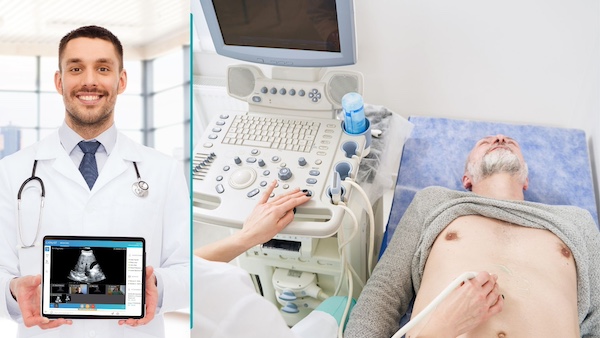Radiology is frequently at the heart of the diagnostic process, providing essential insights that guide treatment decisions across nearly all areas of patient care. However, radiologists face significant challenges that limit their ability to deliver these insights efficiently and consistently.
A major issue is the ongoing radiologist shortage, which restricts the service line’s capacity and places additional strain on existing personnel. This shortage often forces radiologists to divide their time between reviewing images, meeting with patients, and overseeing technologists, who may require guidance during complex acquisitions, or fellows and residents as they are developing their knowledge and skills.
Access to specialized expertise is especially limited in rural and remote areas, where it is difficult to provide advanced imaging services. Effective collaboration with distributed healthcare teams can be challenging when team members are spread across multiple facilities and locations. This geographical separation makes it harder to coordinate care, leading to inefficiencies that can extend turnaround times, delay critical treatment decisions and ultimately affect patient outcomes.
These interconnected challenges highlight the pressing need for solutions that expand access to radiology expertise, streamline workflows, and facilitate real-time collaboration across healthcare teams, regardless of physical location.
Virtual Telepresence: Be There Without Being There
Imaging telepresence is emerging as a groundbreaking solution that addresses these key radiology challenges by providing an immersive virtual environment for collaboration, diagnosis, and training. In this context, virtual telepresence allows radiologists and healthcare teams to experience a sense of physical presence within a digitally mediated space, simulating in-person interactions with a level of detail and responsiveness that traditional video conferencing cannot match.
By incorporating live-streamed audio, video and real-time data from imaging and medical devices, virtual telepresence recreates the experience of being on-site together. Radiologists can interact dynamically within this environment, which enhances the exchange of information and supports in-depth, real-time discussions of patient cases. This technology has the potential to bridge geographical divides, enabling a more seamless exchange of expertise and eliminating the delays often associated with traditional remote consultations.
Key Use Cases and Benefits
1. Enhancing Real-Time, Multi-Disciplinary Collaboration
One of the most compelling use cases for virtual telepresence is enabling remote radiologists to participate in complex procedures as efficiently and effectively as if they were standing in the room. Whether it’s addressing routine protocoling or overseeing complex image acquisitions or invasive procedures where specialized expertise is needed, radiologists, technologists, surgeons, and other specialists can engage in real-time consultations. Through integrated live video and imaging streams, imaging telepresence enables radiologists to share live imaging with the entire care team, facilitating immediate, interactive discussions on diagnosis and treatment. This capability not only accelerates decision-making but also allows for greater accuracy and consensus in complex cases. 
For example, during an interventional procedure, a live view of the surgical field and imaging from devices like ultrasounds or scopes can be live-streamed to a remote specialist, who can guide and advise local physicians, allowing for faster, more effective interventions and minimize the likelihood of repeat procedures — directly impacting patient outcomes and reducing healthcare costs.
2. Advancing Remote Training and Education
Incorporating imaging telepresence into radiology education offers an invaluable opportunity for hands-on learning without geographical limitations. This technology allows trainees to observe a wider variety of procedures, access imaging acquisition, tools, and expert guidance that wouldn’t otherwise be available. This approach is particularly beneficial for rural or resource-limited healthcare facilities, where access to specialized radiology training may be scarce.
For instance, radiologists in remote hospitals can leverage imaging telepresence for supervised ultrasound sessions. The supervising radiologist, located offsite, can observe the procedure live, offering feedback and guidance to improve image quality and technique. This real-time, interactive learning model not only helps improve diagnostic accuracy but also builds confidence and competence among technologists and radiologists in training, leading to more consistent and higher-quality imaging outcomes.
3. Improving Workflow Efficiency with Seamless Integration
Imaging telepresence is designed to enhance workflow efficiency by integrating with existing imaging modalities and hospital systems, creating a unified platform for streamlined operations. With real-time access to imaging data, electronic health records, and other essential resources, radiologists and clinicians can collaborate more effectively, making faster, more informed decisions. This means that radiologists can review imaging studies, provide diagnostic feedback and recommend interventions without delays.
 For example, when an emergency case arises, radiologists can consult remotely and provide urgent diagnostic guidance in real-time, regardless of location. This accelerates treatment decisions, enhancing the responsiveness of healthcare teams and reducing time to intervention. In high-stakes scenarios like stroke care, where every second counts, such timely intervention can be life-saving.
For example, when an emergency case arises, radiologists can consult remotely and provide urgent diagnostic guidance in real-time, regardless of location. This accelerates treatment decisions, enhancing the responsiveness of healthcare teams and reducing time to intervention. In high-stakes scenarios like stroke care, where every second counts, such timely intervention can be life-saving.
A Transformative Technology
Imaging telepresence offers transformative benefits for radiology, providing solutions to long-standing challenges in staffing, collaboration, training, and workflow efficiency. By enabling real-time interaction with imaging studies, bridging geographical gaps, and creating immersive training experiences, telepresence not only enhances the quality of diagnostic processes but also fosters a more resilient and interconnected healthcare environment.
Radiologists are essential for guiding patient care, and the integration of imaging telepresence technology into their daily workflow can significantly improve their capacity to collaborate, learn, and deliver accurate diagnoses. As healthcare continues to evolve toward greater interconnectivity, telepresence stands as a vital tool that empowers radiologists to provide high-quality care to patients, no matter where they are located. With its ability to transcend the physical limitations of traditional healthcare settings, imaging telepresence is not just an innovative technology but a cornerstone of the future of radiology and patient-centered care.
Jeffrey Soble, MD, is a cardiologist and entrepreneur with more than 35 years of cardiovascular experience, Dr. Soble is the chief executive officer of Ascend Cardiovascular in Springfield, Ill. He currently lives in Chicago, where he still practices Cardiology at Rush University Medical Center.